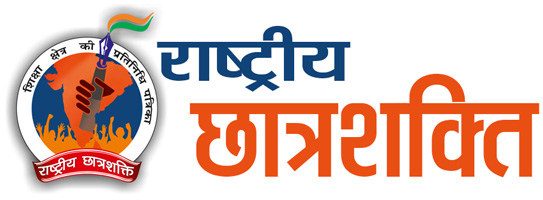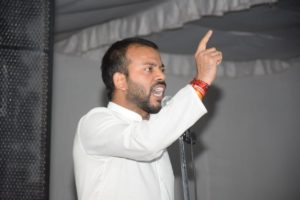It is now widely accepted that the 21st century belongs to Asia, lead by two giant neighbors i.e. India and China. This belief rests on the shoulders of the huge population of young people that these countries possess.
The recent UNFPA report suggests that India now is the most populous country in the world with the maximum number of people falling in the working age group of 18-60 years.
On the other hand, China is on the brink of maxing out its potential sooner due to its autocratic policies and dictatorial tendencies. Also, its egoistic behavior with major powers and debt trap policy towards weak and smaller nations has ultimately put it in the bad books of these countries.
Only India stands apart in this whole scenario, riding on a huge youth population with the experience of being a real democracy for the past 75 years, only India can guide the world towards a future of sustainable development. The constant and smooth transfer of power in the country reassures the global community of its stability and strong democratic base. Also, such a huge young population skilled enough to meet today’s demands of the fast evolving industry makes it a sustainable destination for investing money and resources by the global community.
Keeping in mind the above factors , India’s youth have a lot of opportunities in front of them to make use of their own development and to contribute towards the sustainable development of the world.
India’s potential can be maximized by complementing it’s civilizational ethos of ‘ vasudhaiv kutumbakam’ with the dynamic youth oriented polices being framed by the government towards making India a $ 5 trillion economy. Some of the potential areas include:-
1. Education and Human resource development – The launch of New Education Policy is a directed effort to bridge the gap between the supply and demand of the dynamic education sector in India. The last updated education policy of India was implemented more than 30 years ago. It wasn’t in accordance with the changing realities of the country, thus hampering the scope of opportunities being available with the youth. India was opened up to the world under the LPG policy in 1991, which eventually resulted in the economic and IT boom. The arrival of internet and the increasing proximity of India with the rest of the world pushed open a door of opportunities but the existing policy framework and infrastructure was not in line with the demands of these opportunities, thus putting the young population at a considerable disadvantage.
NEP aims to address this issue by providing sufficient scope to students to balance the resource and time related constraints as per their reality and needs. The facility of credit bank, early exit and re-entry at a later stage in graduation and the facility to pursue two academic degrees at the same time helps the students to go at their own pace. It would also help reduce the rat race of grades among the students, redirecting them towards identification of problems and finding sustainable solutions.
2. Youth and sports- India has been a country where sports plays a vital role in uniting it despite all its diversities. For a long time, cricket and hockey alone carried this burden, and with hockey’s decline, cricket was the only sport for a long time which appeared lucrative. The immense competition however stopped young talent from pursuing it as a career and the dearth of money in this field made it less attractive as well. But in the recent times, this approach has been changing. A focused effort to ensure education and health as a necessary part of a person’s life has helped change the society’s outlook towards sports. Also, increasing involvement of private sector has helped the inflow of money not only in cricket but other sports like kabaddi, hockey, football, etc. The exemplary performance of India in Olympics 2020 in lesser known events like javelin throw and golf and its re- emergence as a hockey giant has helped build the confidence among young Indians to pursue their passion in the field of sports. Investment coupled with appropriate policy and infrastructure backup will surely help India become a sporting capital of the world in future.
3. Agriculture – The grand illusion served by modern advertising and fast lives have slowly made us believe that only branded and packaged products define a good life or growth. However, India’s strength lies in its villages. This example of a strong grassroots democracy needs to be strengthened at all costs and to ensure this, we need to convince our urban population to look back at its rural roots. Agriculture is the lifeline of our country, making India self sufficient in most of the agro products. This helps us secure our food needs of the future and export them to create a strong Indian footprint in the global food market.
Turning back to our villages can help us in many ways, foremost being an additional source of income to help us give a cushion in our monetary needs. Also, it can help address the disconnect of our young generation with our villages and help spread awareness about the woes of our villages to better solve them.
India’s way ahead
India is moving ahead from just being a country supplying engineers and doctors to excelling in all fields. India has arrived at the high table in various fields & it is well on course to steer the world in an era of Dharmic peace & living.
Large Indian diaspora in the world is taking up critical leadership positions, contributing in the development of those countries on one hand, and introducing and promoting their rich Indian culture on the other. This adds to the much needed soft power of India. Their remittances have played a huge role in strengthening India’s economic base. Social media has also played a huge role in opening a gateway for the youth to showcase their talent to the world.
Thousands of young Indians use social media for their primary earning and also take India to the global level with their hard work and talent.
When the world population is ageing fast and countries are struggling to withhold their economic structures in this ageing phenomenon, India shows the way by supplying skilled and hardworking labor to these countries complimented by the spread of its ancient Hindu philosophies of peace, harmony and sustainable living. India surely is the future, holding within it answers to critical problems of the world.
( Author is a 2nd year Law student at Faculty of Law, Delhi University and Secretary of ABVP LC1 Unit)







